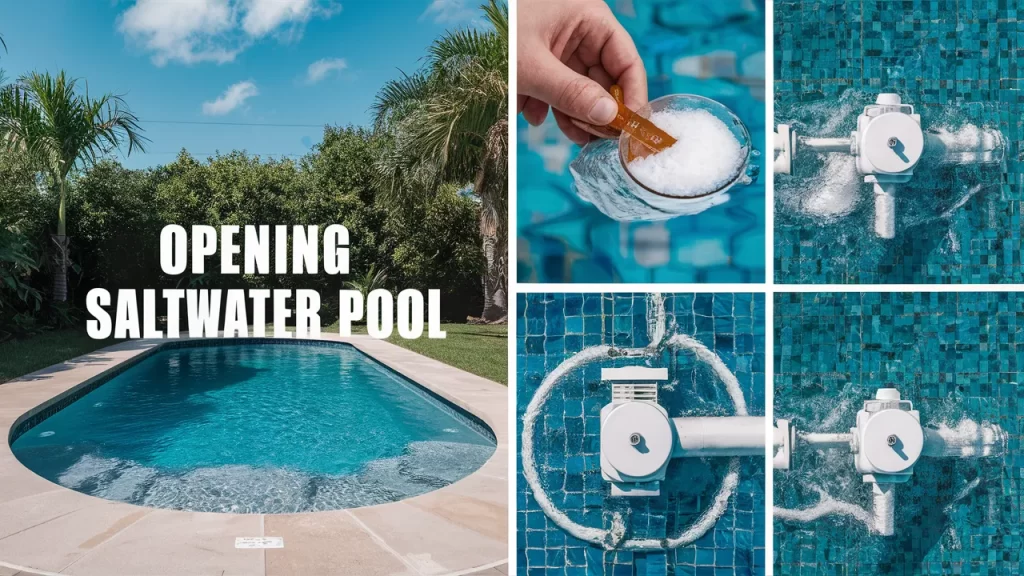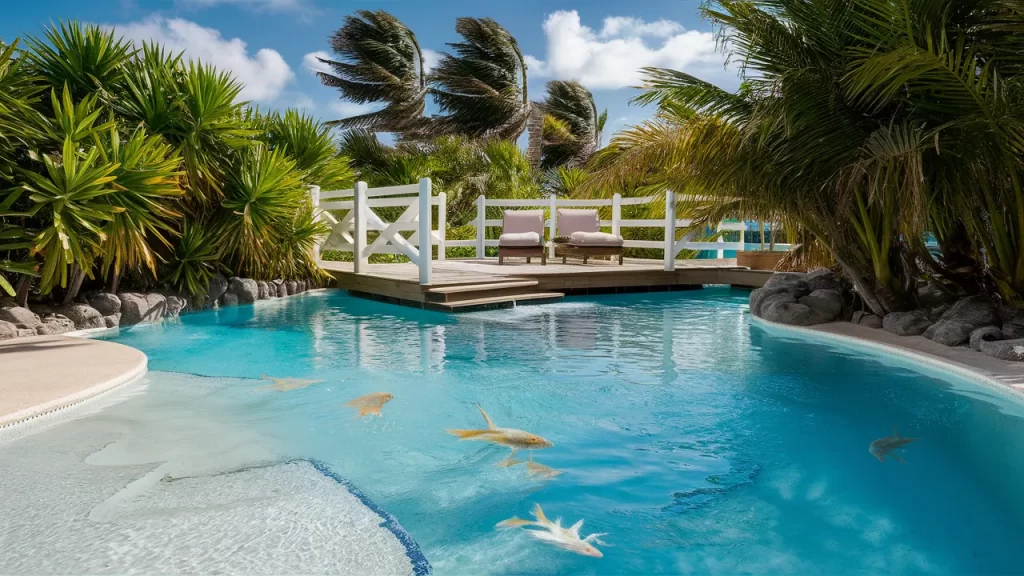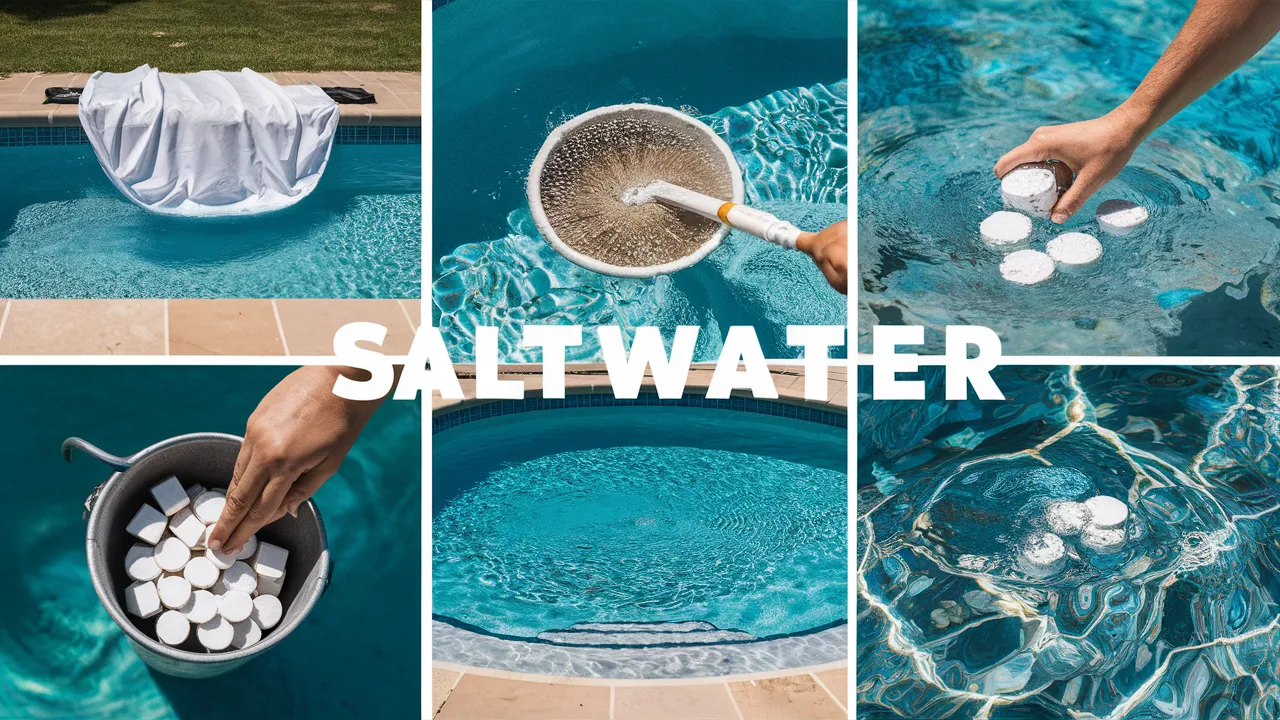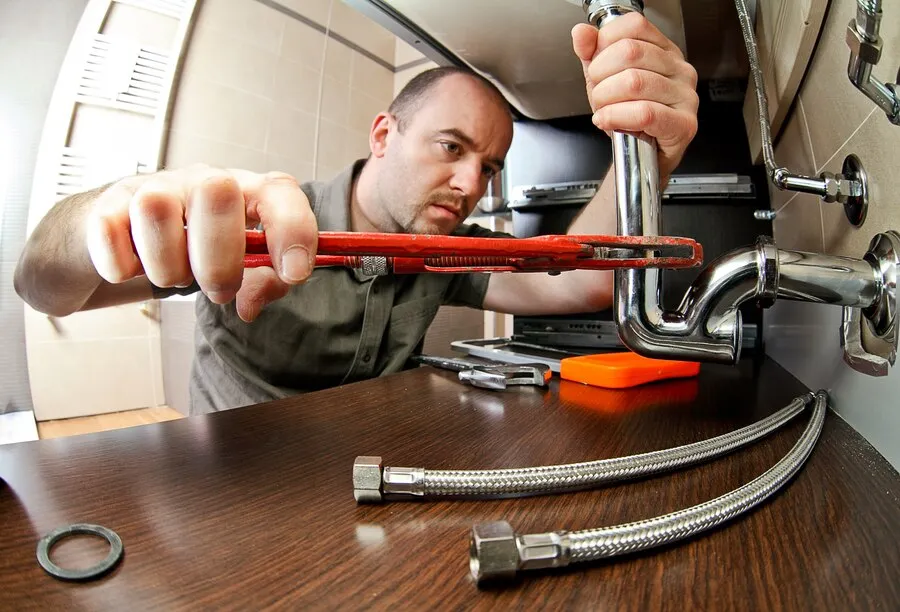Table of Contents
Did you know that a well-maintained saltwater pool can save you up to 50% on chlorine costs each year? As summer approaches, getting your pool ready is crucial. This guide covers everything you need to know, from prepping equipment to balancing water chemistry and activating the salt system.
By following these steps, you’ll ensure your pool is clean, safe, and ready for endless summer fun. Dive into our comprehensive guide to make your saltwater pool opening a breeze! Here are 7 Steps below on how to Open a Saltwater Pool.
Preparing Your Pool for Opening

Remove the pool cover carefully to avoid tearing. Clean it thoroughly with a brush and mild detergent. Once it’s clean, let it dry completely before storing it in a place where rodents and insects can’t reach, such as a sealed storage bin or a high shelf in your garage.
Next, reattach all the pool equipment that was removed for the winter. Replace the drain plugs on the pool equipment. Wrap the threads of the plugs with fresh Teflon tape to ensure a tight seal. This prevents leaks once the pool is operational.
Check all gaskets and o-rings for any signs of wear and tear. Apply a small amount of silicone pool lubricant to keep them flexible and ensure a good seal. Reconnect the pump, filter, and any additional accessories, and apply pool lubricant to the pump lid o-ring to prevent leaks. If you removed the pressure gauge from the pool filter for winter, reattach it now.
Setting Up the Salt Cell and Equipment
If you removed the salt cell for winter, it’s time to reinstall it. Apply a small amount of pool lubricant to the union o-rings to ensure a tight seal. Position the salt cell carefully and tighten the unions fully to secure it. Once the salt cell is in place, plug it into the controller but keep the system turned off for now.
Inspect all pool equipment and plumbing to ensure everything is tight and secure. This includes checking clamp bands, hose clamps, unions, and other connections. Open all valves so water can flow freely through the filter system.
Remove the pool plugs from the skimmers, wall returns, and cleaner lines. You will know the lines stay empty if water rushes in to fill the pipes as you remove the plugs. Once the plugs are removed, add water to the pool to bring it back to normal levels, usually about halfway up the mouth of the skimmer.
Read also: Best Things to Do for Couples in Barbados
Priming and Starting the Pump System
Fill the pump with water, or for above-ground pools, just open the valve to flood the pump basket. Check one more time that everything is tight and that all winterizing plugs have been removed. Make sure all system valves are open.
Set the multiport valve to the “Drain to Waste” or “Backwash” position. Open the filter’s air relief valve and turn on the pump, running it for several minutes with all lines fully open. After a few minutes, turn off the pump, switch the multiport valve to the “Filter” position, and turn the pump back on.
Watch the filter pressure closely—if it spikes over 30 psi, shut off the pump immediately and investigate the cause. When the air relief valve starts spraying water, close it. Inspect the entire system for any drips or leaks.
Balancing Your Pool Water Chemistry

Add a stain and scale preventative to your pool water. Products like Stain Away or Metalfree help keep metals, excess calcium, and high Total Dissolved Solids (TDS) in solution, preventing them from settling on your pool surfaces and causing stains and scaling.
Use a reliable test kit, such as the Taylor K-2005 or AquaChek Select 7-Way Test Strips, to measure your water’s pH, Total Alkalinity, and Calcium Hardness. Adjust the water parameters to the recommended levels:
- pH: 7.4–7.6
- Total Alkalinity: 80–120 ppm
- Calcium Hardness: 200–400 ppm
Use water balancers included in your pool care kit to make these adjustments as needed.
Cyanuric acid is crucial for salt water pools. It acts as a stabilizer, protecting chlorine from being quickly broken down by the sun’s UV rays. Maintain cyanuric acid levels between 30 and 50 ppm to ensure your chlorine lasts longer and works more effectively.
Shocking Your Pool

Before shocking your pool, ensure the water chemistry is balanced. If you skip this step, the chlorine might not work effectively, leading to stains and scaling on your pool surfaces.
Once the water chemistry is balanced, you can proceed with shocking the pool. Use powdered or liquid chlorine to super-chlorinate the water. For clear water, use 1 pound of pool shock per 10,000 gallons. For green or cloudy water, use 3 to 5 pounds per 10,000 gallons.
After adding the shock treatment, run your pool pump and filter system to help distribute the chlorine evenly. If the water is still green or cloudy after 24 hours, repeat the shock treatment until the water turns clear and blue-gray.
Testing and Adjusting Salt Levels
Use salt test strips or a digital salt meter to measure the salinity of your pool water. Ensure the salt levels are within the manufacturer’s recommended range, typically between 2700 and 3400 parts per million (ppm).
If the salt levels are below the recommended range, add pure pool salt. Typically, you will need one or two bags of pure pool salt to bring the levels back up. Pour the salt around the edge of the pool and use a brush to help disperse and dissolve it. Avoid using impure salts like solar salt, water softener salt, or salt with additives.
Activating the Salt System
Ensure the salt levels and overall water chemistry are within the recommended ranges.
Turn on the salt system and set the sanitation modes according to the manufacturer’s instructions. Test your pool water several times a week to ensure the chlorine production is adequate and to maintain balanced water chemistry. Inspect the salt cell monthly for scale deposits and clean if necessary.
Final Words
To open your saltwater pool system successfully, remember to balance the water chemistry first, shock the pool second, and ensure correct salt levels before activating the salt system. By following these steps, you’ll ensure your pool is ready for a safe and enjoyable swimming season. For more information or assistance, browse our blog, call us, or send an email. We’re here to help you make the most of your swimming season.




